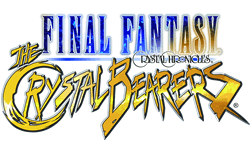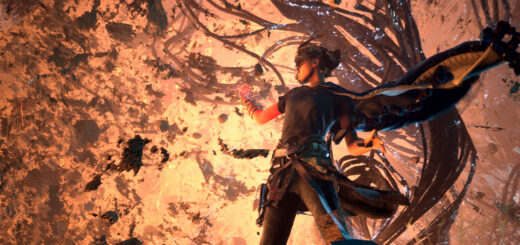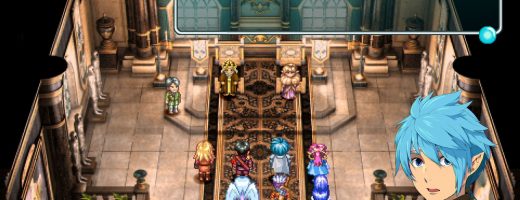Final Fantasy Crystal Chronicles: The Crystal Bearers Review
Would You Like to Bear My Crystals?
Let’s get the giant elephant in the room out of the way right at the start: Final Fantasy Crystal Chronicles: The Crystal Bearers is not an RPG. Perhaps it was during development, but the resulting effort is clearly on the action/adventure side of things. However, Square Enix labeled it as an RPG, and as such this brought about many expectations for the game that it was not designed to meet. However, if played with an open mind, what one will find is that Crystal Bearers is a fun and experimental game that will provide plenty of entertainment while it lasts.
So what is the game exactly? The latest in the Crystal Chronicles sub-series, Crystal Bearers takes place in the same world as the previous games, only now 1000 years into the future. Following a great war, one of the four tribes of the world, the magic-using Yukes, is obliterated when their racial crystal is destroyed. With no magic in the world, technology flourishes. The other races are largely ruled over by the Lilties, the plantlike warrior tribe. The other tribes, Clavats and Selkies, look largely like humans, with the only differences being in personality. Clavats are peaceful, farming types while Selkies are more like rogues. This sets the stage for the main characters in this tale; the Crystal Bearers. Despite the disappearance of the Yuke tribe, magic continues to exist in the form of people imbued with crystals which give them various magical abilities. The main character, Layle, possess telekinetic powers, and he uses these powers to make money as a freelancer. It’s on one such job, escorting a Liltie ship, that Layle runs into one of the lost tribe, a Yuke, that our story begins.
Crystal Bearers is a hard game to peg into one genre, but the best way to describe it is as an action/adventure game. There’s no leveling or character upgrading systems in place here, and nothing in the way of major character interaction outside of story scenes. The story-related action in the game focuses primarily on scripted sequences that may best be described as mini-games. This includes everything from an escape by chocobo, an on-rails gun sequence, and even a shooter type segment that almost feels like something out of Panzer Dragoon. As an example of how these mini-game segments vary, the game starts off with a shooter segment using just the Wii remote to point and shoot. Soon after this it switches to a segment where the air liner is controlled as it crashes using only the analog stick to steer left and right. These do a lot to enhance the action of the story, and keep things fresh and interesting throughout. Late in the game there’s even the option to go back to many of these previous sequences to attempt to get high scores or just to enjoy previous fun segments. A small number of the sequences aren’t very good, such as a dancing segment. Thankfully they are kept short, and don’t deter from the overall experience.
Outside of these sequences, the action focuses on the use of Layle’s telekinetic powers. This can be used to solve puzzles for light platforming and, of course, for a bit of combat. Exploration and combat take place in real-time as you wander around the game world. The interesting thing about combat in this game is that it is largely optional. Granted one can’t always waltz through areas with enemies. There are many story segments where it’s required, but the general combat areas while exploring the world are not required experiences. An odd aspect of these is that they are set on a timer so all the enemies will disappear after it has elapsed. Fail to destroy all the enemies in that time, and they will all return when they next re-spawn. The reward for destroying all the enemies within this time-frame is an extra unit of health. These are quite useful against the more difficult bosses later in the game. This makes these battle areas almost feel like puzzles, trying to find the best ways to defeat enemies as quickly as possible.
Experimentation is the name of the game here, as simply picking up enemies and throwing them at each other with telekinesis often won’t get the job done very quickly. As such, Layle can pick up various items in the environment to use as weapons, or sometimes stun enemies themselves and use them as weapons. Experimentation will also lead to many humorous ways to take on enemies, such as giving a skeleton something else to replace its head with. This aspect of the game goes beyond combat, as in towns and various areas Layle is free to pick up characters and move things around to see how the world reacts. The game rewards experimentation in and out of combat with an achievement system with dozens upon dozens of different medals to obtain. One could end up spending countless hours moving things about in the world trying to find new achievements. It’s a great system that rewards exploration of the game-world.
As far as actual controls for exploration of the game world, everything is handled using the Wiimote/Nunchuck combo. This works as one might expect: the analog stick controls movement while the Wiimote is pointed at the screen to use telekinetic powers. The camera is controlled using the d-pad, and while it can be a bit finicky at times, it is not a huge issue overall. The biggest issue with the interface is related to the Wii’s motion controls. When “locking” onto an object, there are different gestures for picking it up or simply tossing it in a certain direction. These did not always read correctly, and there will be some instances where trying to pick something up results in inadvertently tossing it to the left or right. Thankfully, once Layle is holding an item with his powers, aiming and firing it is a simple matter of aiming and pointing the Wiimote. Some items which can be used in other ways, such as monsters that fire projectiles, function in the same way. This aspect of the controls has very few, if any issues. As a final note on the controls, all the menus in the game are simple and easy to use with either the Wiimote or the analog stick on the nun-chuck.
These various gameplay systems will keep one going through the main storyline. The storyline is largely fascinating, focusing on the interactions between the tribes and the consequences of the destruction of the Yukes’ crystal. It’s a fine tale, but it’s hurt by some oddities in the script. For example, there’s one part where Layle asks a character if he’s heard about a recent event for which only Layle and one other character were present. These moments are relatively few, but they serve to hurt the overall narrative. It’s a shame, as the characters are well voiced, and Layle is certainly one of the better Final Fantasy protagonists in years. Regardless of the quality issues, the story will make you care about the characters involved, and it has a satisfying conclusion that hints at a sequel that is now very unlikely.
Music and visuals are two particular areas where Crystal Bearers shines. The music, however, is wonderful, featuring one of the most eclectic soundtracks one is likely to ever hear in a video game. It covers everything from bluegrass and rock, to classical and jazz. The soundtrack would be good enough if all it had going for it was variety, but the quality of the tracks is superb. Players may find themselves wandering back to previous areas simply to hear that particular tune. It’s possible one may even catch some hints of the soundtracks of other games in the series. The visuals are also a major strong point for the game. The art direction successfully takes the art-style of the previous Crystal Chronicles games and brings it into a more steam-punk styled world. Familiar Final Fantasy monsters will be instantly recognizable, as will the tribes from the previous games in the series. Of course they sometimes have their own twists to fit the style of Crystal Bearers, but nothing that makes them unrecognizable. The Final Fantasy games are known for visual flair, and Crystal Bearers puts the limited power of the Wii to good use.
If players focus on just the main storyline, the game will end up being pretty short: somewhere in the range of 6-8 hours. However, this isn’t the kind of game designed for that approach. There is a ton of optional content, expensive equipment to get to improve Layle’s telekinetic powers, and the previously mentioned achievements to hunt down. In addition, there’s a new game plus option which allows the player to bring money, purchases, and health upgrades into a new playthrough. With optional content in mind, the playtime can easily be doubled or tripled. It’s shame, then, that the game is mostly on the easy side. Some of the battle areas and bosses can provide a nice challenge at times, but it is never extremely difficult.
In the end, Crystal Bearers flirts with greatness, but mostly ends up being a good to very good experience. The fantastic presentation and a good plot help to make up for some of the deficiencies in gameplay and localization. It’s certainly not the best action/adventure game out there, but it still proves to be a fun title with a likable cast of characters, who sadly may make their one and only appearance in this particular game. Fans of Final Fantasy, Crystal Chronicles, or action/adventure fans in general should give it a try and go in with an open mind.


Interesting story, localized fairly well
A ton of optional content
Brilliant music and great visuals
Controls can sometimes be finicky
Very short if optional content skipped
Despite what it's labeled as, it is not an RPG








Recent Comments